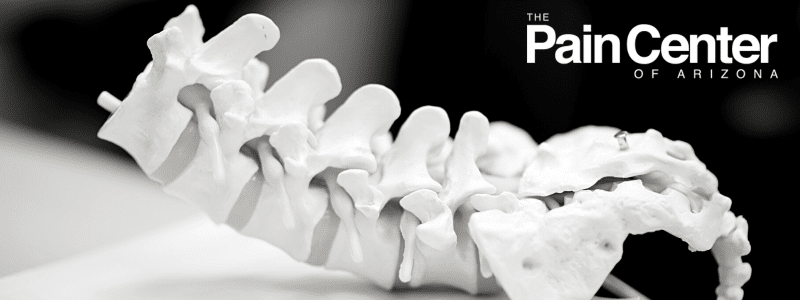
Bone cement is a tool used by our physicians to create an internal cast that stabilizes fractured vertebrae. It doesn’t look like the wet cement you may see on the street at first. In fact, it starts out as a fine powder composed of methyl methacrylate. Methyl methacrylate is most commonly used as bone cement, but it can also be used to make resin (filling for your teeth) or some plastics.
A physician mixes the powder with a liquid to create a solution called polymethyl methacrylate, which is bone cement. In some cases, antibiotics can be added to the powder before the liquid is mixed in to avoid infection. When people think of cement, they may think of how the sidewalk is glued to the ground. Bone cement is not an adhesive. Instead, it fills in the space where a diseased vertebra used to be.
The Pain Center of Arizona uses bone cement when performing vertebroplasty. This minimally invasive procedure repairs spine fractures caused by cancer, arthritis, osteoporosis, or injury, but it also is used to stabilize the spine.
During this procedure, a tube is placed through an incision into the vertebra with the help of an X-ray. The X-ray, or fluoroscope, is used so the physician can see exactly where to put the needle and how much cement to add. It also helps the physician see if any bone cement is leaking out so he or she can stop this from happening.
The vertebra is then filled with bone cement, sometimes on both sides of the vertebra. The bone cement helps to stabilize the fracture so the patient can move their spine with less pain. On top of treating the spinal fracture, it reduces the chance of additional fractures in the future and helps improve posture and stability.
Bone cement is considered very safe, but there is a rare condition known as bone cement implantation syndrome. Very little is known about this condition – in fact, researchers do not have an exact definition for it.
While a patient is having surgery under anesthesia, patients may experience hypotension, cardiac arrhythmia, cardiac arrest, and more, according to a study from Oxford Journal. However, most cases of bone cement implantation syndrome occurred during hip surgery, not spine surgery. If you are at all concerned about side effects or risks from a vertebroplasty procedure, be sure to speak to your physician at The Pain Center of Arizona.
The advice and information contained in this article is for educational purposes only and is not intended to replace or counter a physician’s advice or judgment. Please always consult your physician before taking any advice learned here or in any other educational medical material.




